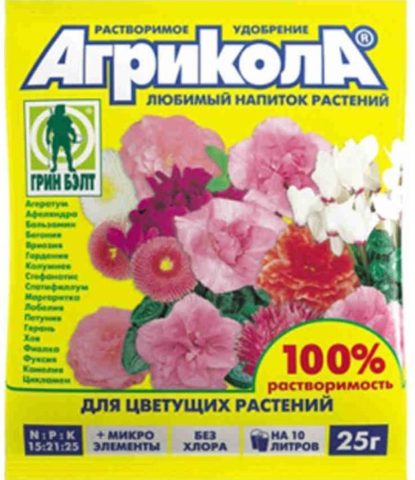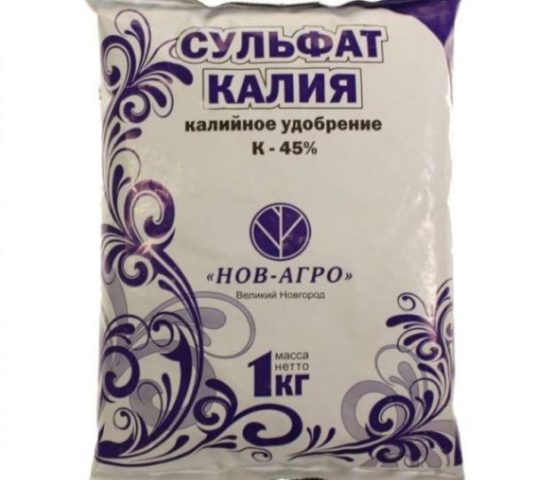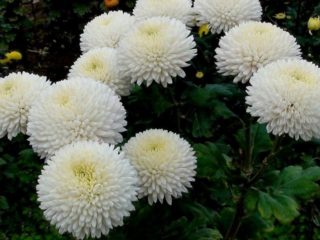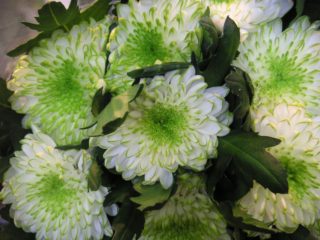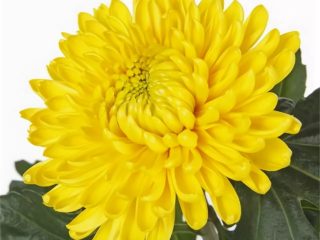Content
Single-headed chrysanthemum is a flowering crop bred for cultivation in the open field and in a greenhouse. All varieties are suitable for forcing and cutting. They differ in color, flower shape and stem height.
Description of single-headed chrysanthemums
A distinctive feature of all varieties of culture is large flowers and a long elastic stem.
Characteristics of single-headed chrysanthemums:
- grows in the form of a herbaceous shrub with erect peduncles;
- the length of the stems, depending on the variety, varies from 50 cm to 1 m;
- the structure of the shoots is plastic, the surface is often smooth, but ribbed is found;
- flowers are large (up to 25 cm in diameter), of various colors, double or semi-double;
- leaves with wavy edges, long, alternately located;
- the root system is superficial, branched.
In greenhouse conditions, plants bloom at any time of the year. They are grown as annual seedlings.
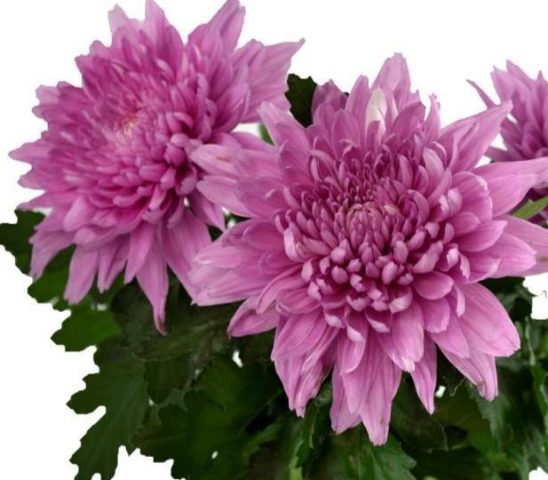
Plants are used in floristry and ornamental gardening
One-headed representatives of the culture are called frost-resistant. The seedlings are distinguished by good resistance to infections. They are undemanding to care.
Varieties of single-headed chrysanthemums
Among single-headed chrysanthemums, specimens with large flowers, various colors and shapes are popular. For cutting, high or medium-sized plants with different flowering periods are cultivated.
Avignon
Avignon (Avignon) - a variety of single-headed chrysanthemums, which refers to late flowering. The cutoff period is at the end of October.
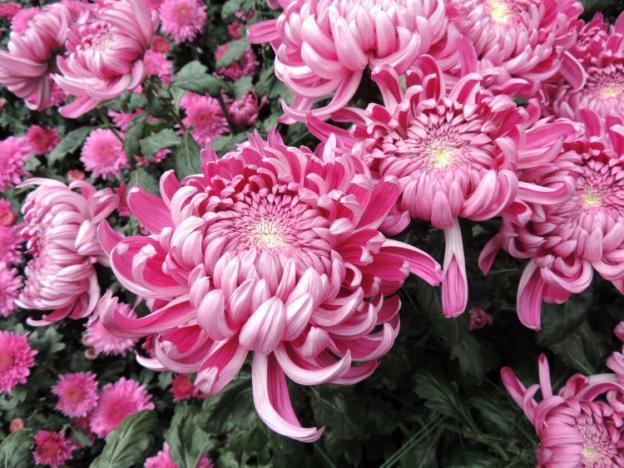
The flowers of the single-headed variety Avignon are densely double, large, reaching a diameter of 15 cm
The shape is spherical, the petals are oblong with raised tops. Plant height does not exceed 80 cm. The bush is compact, densely leafy, with enhanced stem formation.
Depending on the variety, the color of the petals is deep or light pink with a creamy core.
Safina
Safina (Safina) - a variety of single-headed chrysanthemum, obtained as a result of Dutch selection. The petals are needle-like, with different colors: closer to the center, brown with a red tint, the ends are yellow or lemon. The diameter of the flower is 10-13 cm. The height of the single-headed plant is 75-80 cm. It blooms at the end of September.
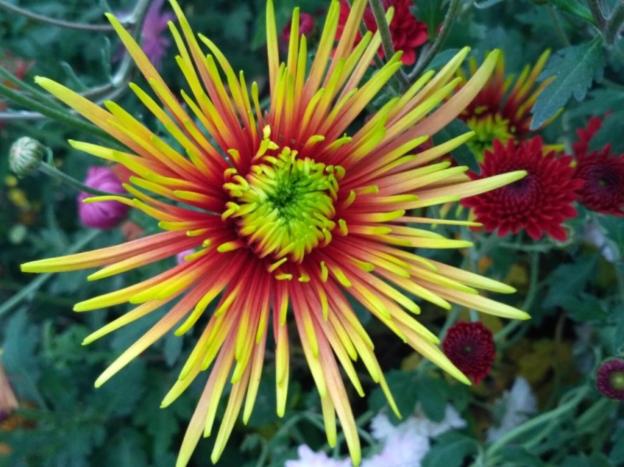
Safina retains its presentation after cutting within 20 days
Magnum Yellow
Magnum Yellow hybrid from Holland. It belongs to new varieties. The flowers of the single-headed variety are yellow, with a closed middle, spherical, 25 cm in diameter.The bush is medium-sized, the stems reach 65-70 cm in length.

Magnum Yellow is blooming at the end of August.
Tom Pierce
Tom Pearce is a variety of double-headed chrysanthemums with medium-sized globular flowers (7-10 cm). The bush grows up to 60 cm in height. The single-headed culture is highly winter-hardy. Flowering lasts from late August to mid-September.
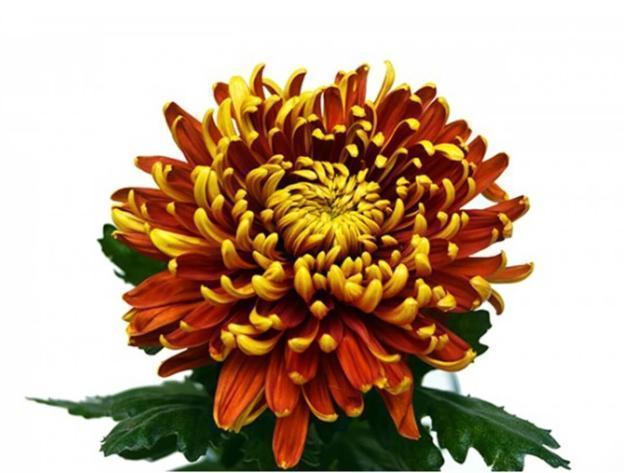
The lower part of the petals of the chrysanthemum of the one-headed Tom Pierce is colored yellow, and the inner part is dark orange or terracotta
Ping pong
Popular among florists, the Ping Pong variety has small flowers (diameter 7 cm).The rounded shape resembles pinkish-white balls. The plant is tall, can reach 1.2 cm. The flowering of a single-headed crop begins in September-October.
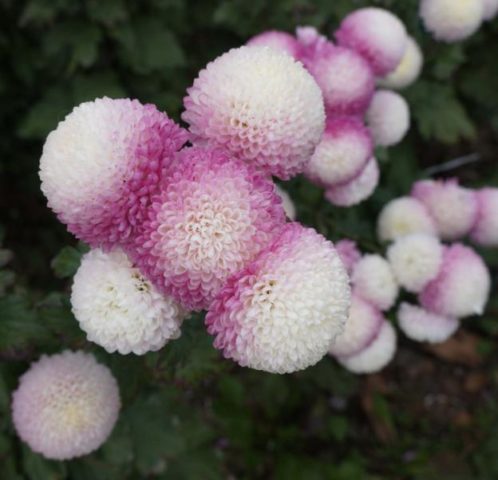
The petals of the representatives of the Ping Pong variety are short, with concave edges, densely arranged
Bowl
Bowl is a densely double-headed chrysanthemum variety characterized by abundant flowering that begins in late August. The plant is compact, densely leafy, with numerous peduncles 85-90 cm high. The flowers are large, spherical, have a white color with a greenish core, their diameter is 17-19 cm.
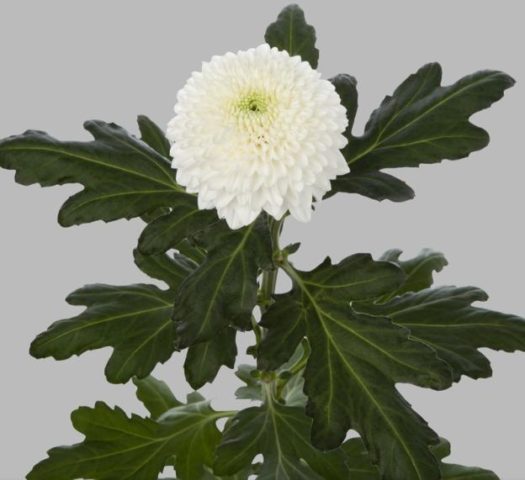
Bowla retains its beauty after being cut for three weeks
Lyuba
The densely doubled variety of single-headed chrysanthemums Luba (Luba) is distinguished by large flowers with a diameter of 20-22 cm.The color is maroon or purple. Tall bush - 1 m and more. The flowering period begins in September and lasts 3 weeks.
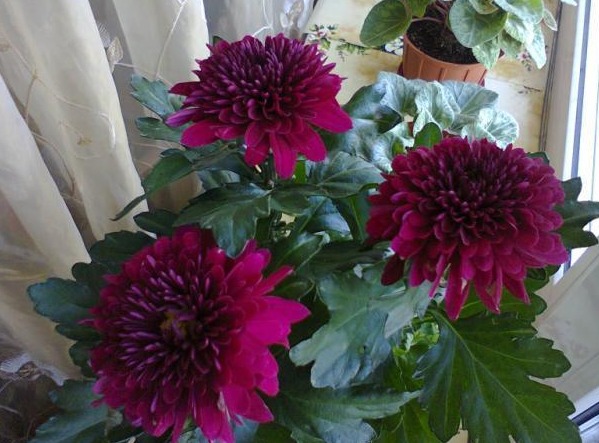
The petals of the representatives of the Lyuba variety are large, wide, in shape, the flowers resemble dahlias
Planting and caring for single-headed chrysanthemums
Growing conditions are different for all climatic zones. In the central zone, in the Urals or in Siberia, the plant is cultivated in greenhouse conditions. Almost all varieties bloom later, therefore, when grown outdoors, flowers are damaged by the first frost. In the South, the culture is grown to decorate the landscape.
Selection and preparation of the landing site
All single-headed representatives of culture are photophilous. If chrysanthemums are cultivated in greenhouse structures, additional lamps are installed so that the daylight hours are at least 15-16 hours. Particular attention is paid to temperature, since the plant responds poorly to sudden changes. Optimal indicator for growth +25 0FROM.
In an open area, choose a sunny area without periodic shading, protected from the north wind. Chrysanthemum develops well only on fertile soils, light, drained, with a neutral reaction. In early spring, the area set aside for single-headed chrysanthemums is dug up, organic matter and ash are scattered on top. Before planting, the bed is loosened to a depth of 15 cm, complex fertilizers are covered and watered abundantly.
Landing rules
Planting time of single-headed chrysanthemums depends on the purpose and method of cultivation. Plants are planted in closed structures throughout the year for forcing and subsequent cutting. From the moment the planting material is placed in the ground to flowering, it will take about 90 days. It is transferred to an open bed in the spring (May-June).
Planting is carried out taking into account the fact that the root system of single-headed chrysanthemums below 25 cm does not deepen, but branches well. With a massive placement of seedlings, at least 40 cm is left between them.
Planting sequence:
- Make a weak solution of manganese, heat up to +60 0C and water the prepared bed.
- In greenhouses, the landing recess should be 20-25 cm, in an open area - 30 cm, of which 10 cm is a drainage pad.
- Chrysanthemum planting material is installed vertically, the hole is covered with earth, slightly compacted.
- The plant is watered and the root circle is covered with mulch.
- After planting, break off the top and remove all green mass from the stem.
Watering and feeding
The requirements for caring for single-headed chrysanthemum at home, outdoors and in greenhouse structures are the same. The plant is hygrophilous, but at the same time responds poorly to stagnant water. Regulate watering according to rainfall. In the greenhouse, they control so that the soil does not dry out. Watering is carried out only at the root, sprinkling is not carried out for this type of culture.
To form large, lush inflorescences, single-headed chrysanthemums need feeding throughout the growing season:
- At the time of the formation of shoots, urea, nitrophoska or any nitrogen-based product is added to build up the green mass.
The granules are embedded in the ground to a depth of 10-15 cm around the plant
- In the second half of August, chrysanthemums are fertilized with Agricola or superphosphate, this contributes to better bud formation. A working solution is made and root dressing is carried out, carefully so that the liquid does not get on the stems or leaves.
- During the main flowering, potassium sulfate is added.
Reproduction of single-headed chrysanthemums
Basically, varieties of single-headed chrysanthemums are propagated by seeds, which are formed in the center in tubular petals. There are varieties that have a different flower structure, so the plants are sterile.
Chrysanthemums placed in an open place are grown as perennials, in this case, the reproduction method by dividing a three-year-old bush is quite suitable. Activities are carried out in any growing season, except for flowering.
The main and most productive breeding method is cuttings. For open ground, the material is harvested in the fall, placed in containers with earth and kept until spring at a temperature of + 10-15 0C. In greenhouses, cuttings are determined on the garden bed immediately after harvesting.
Diseases and pests of single-headed chrysanthemums
Fungal infections very rarely affect single-headed chrysanthemums. Gray mold can occur in high soil and air humidity. In greenhouses, this phenomenon is rare, because the structures are constantly ventilated. In the open area, plants get sick during the rainy and cold season.

They get rid of the problem with Topaz, not only the bush is treated with a working solution, but also the soil around it
When grown in a closed way on a single-headed chrysanthemum, aphid parasitizes. Iskra helps to cope with it. In an open area, slugs may appear. They are effectively destroyed with Metaldehyde.
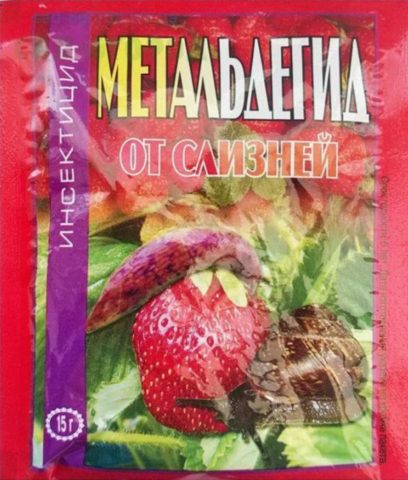
The effect of the use of a contact preparation appears after 3 hours
Conclusion
The single-headed chrysanthemum is a tall hybrid variety created for cutting. Varieties are used not only in floristry, but also for landscape design. The culture is grown both in greenhouses and in an open area.

